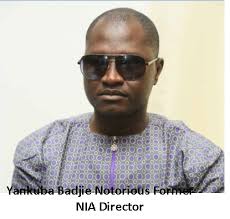By Dawda Faye
Segaran Ramaru Neidu, a South African forensic pathologist, on the 3rd April, 2019, testified in the case involving Yankuba Badjie and other former NIA officers before Justice Kumba Sillah-Camara of the High Court in Banjul.
In his testimony, he told the court that he is a specialist in forensic pathology and a qualified medical doctor, noting that he qualified in 1982. He stated that he was one of the doctors who was invited by the Ministry of Justice to conduct an examination on the remains of Solo Sandeng late May or early June last year.
 He adduce that once the project was confirmed, he arrived in Banjul on the 24th June, 2018. He said he met the other experts who were to participate in the autopsy examination.
He adduce that once the project was confirmed, he arrived in Banjul on the 24th June, 2018. He said he met the other experts who were to participate in the autopsy examination.
He told the court that they had a meeting with the Attorney General and the Solicitor General, adding that the next step was the autopsy arrangement. He revealed that they met with the Chief Medical Director of EFSTH. He noted that they also met the resident pathologist and the mortician and looked at the facility in order to know the other facilities and resources they might need.
Mr. Neidu told the court that they identified that an x-ray should be made, noting that after some delay, they conducted an autopsy and there were four dead bodies. He said as a pathologist, he led the autopsy, saying that the identification was the responsibility of the other officers.
He adduced further that the body was identified to him by Fansu Thomas of the Gambia Police Force, the hospital mortician and another person. He stated that the purpose of the autopsy was to determine the corpses and the cause and mechanism of death, and make a comprehensive report as well as any special laboratory or other investigation and take any exhibits or samples as evidence.
He narrated that from the autopsy lawn, they could not draw the result from the autopsy, adding that the Ministry of Justice provided him a set of video files and electronic copies and granted him access to one witness to be examined. He testified that the video files were 5 or 6 in number but there were also two other main video files that had pertinent observation which was relevant.
He revealed that Nogoi Njie was the witness, and this was the source of examination, saying that he compiled the full report of his finding in a mechanism manner and circumstance of death from medical aspect.
At this juncture, he was asked by Lawyer Combeh Gaye, who was leading him in his evidence, whether he would be able to recognize the report he prepared. He answered in the positive and said that he had the original copy of the report. Counsel Gaye then applied to tender the report which was prepared and signed by the witness.
Defense Counsel Mene rose and objected that the copy was not the original, arguing that no foundation had been laid for the admission of the document. He said it was a photocopy. Defense Counsel Jallow stood up and said that he adopted the objection made by Counsel Mene.
Defense Counsel Fatty also objected and stated that no proper foundation had been laid as to who was the author of the report whose signature was on the document, adding that the document was not the original. Defense Counsel Dago adopted the objections made by the other defense counsels.
Counsel Combeh Gaye then rose and told the court that the witness stated that he signed the report and said it was the original. She urged the court to overrule the objection, and that a proper foundation had been laid.
The presiding judge ruled that the signature on the report was original, adding that the objection raised by the defense had no merit. She stated that the document was relevant and was original. She subsequently overruled the objection and admitted the document.
Mr. Neidu continued his testimony and said that he carried out an investigation report on Ebrima Solo Sandeng, noting that his conclusion was that the matter of death was unnatural and was caused by torture. “There was excessive blood loss and low blood pressure. There was no enough blood to maintain life,” he told the court.
|
|
